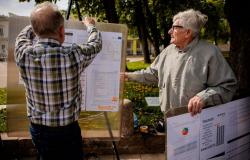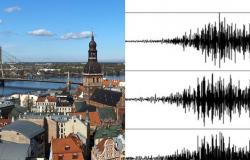This is how the circumstances arose, that at the beginning of spring I had to spend a week in the capital of Romania. The city is huge (1.83 million inhabitants), maybe even the biggest in Eastern Europe.
Copies the French
The taxi driver who took me from the airport to the hotel in the center was very polite, spoke English and told me all the way about the sights from the window. We passed the relative Arc de Triomphe, a fairly exact copy of the Paris one, which was built in 1922 to honor the soldiers of the Kingdom of Romania who fought in the First World War. Also, this building symbolizes Romania’s Latin heritage and strong ties with France.
We quickly entered Calea Victoriei – Victory Road – this is how the street was renamed in 1878 to mark Romania’s victory in the war of independence against the Ottoman Empire.
Upon reaching the Revolution Square, the driver pointed to the building of the former headquarters of the Communist Party, from the balcony of which on December 21, 1989, the leader of this party, Nikolae Ceausescu, tried to give a speech to the gathered crowd and escaped by helicopter after being whistled. He took the dictator from the roof of the building. His 34-year reign came to an ignominious end.
Driver – and guide
The driver assured that Bucharest is a safe city for tourists. Therefore, believing his words, I devoted the evening to getting to know the old town. I was surprised by the beauty and grandeur of the old buildings. However, the buildings were crammed next to each other in a chaotic manner, some kind of new creation was stuck to the masterpiece of art, in many places the streets were not sparkling clean and the walls of all the buildings were painted with graffiti. Well, a lot of vagrants live in the streets of the old town.
Many small churches were charming, but they were overshadowed by buildings from the communist era. Perhaps this is an attempt to undermine their purpose or authenticity?
In the old town, you could see some completely crumbling houses, but most of them are being repaired. Sometimes I felt like I was in an eternal construction site. The size of the Bucharest Parliament House captivated. It is one of the largest buildings in the world with 12 floors up and 8 underground, 1100 rooms. A quarter of the old town was wiped out to build this monster.
Artūrs Birbil’s photo. / Bucharest, Romania
Bucharest “scourge” and heavy traffic jams are inevitable, especially on Monday morning and Friday evening. As the locals explained, Romanians want to drive, even if it’s an old Dacia, but under no circumstances take public transport. I had to see how a policeman on the streets synchronously regulates traffic flows with a baton, even though the traffic lights are working flawlessly. Maybe the policeman’s baton is disciplining?
Public transport is great
Most travelers fly into Henri Coanda International Airport, which is 16.5 km from the center of Bucharest. You can continue your journey by public transport, taxi or renting a car.
Bus no. 783 departs from the airport in about 40-50 minutes, and the ticket price is 5 lei (about 1.05 EUR). Metro line M5 connects the airport with Eroilor metro station. The journey takes about 35-40 minutes, the ticket price is the same.
Public transport in Bucharest is well developed.
Taxi is the most convenient, but the most expensive option. The trip to the center takes about 20-30 minutes, and the price is from 30 to 50 lei (from 6.30 to 10.50 EUR). You can book a transfer from the airport to your hotel or other location of your choice. The price of transportation depends on the number of passengers and the distance. If you rent a car, you can drive from the airport to the center in 20-30 minutes.
Artūrs Birbil’s photo. / Bucharest, Romania
Please note that parking in the center can be difficult to find. If you are traveling with a lot of luggage, it is recommended to use a taxi or shuttle.
Public transport in Bucharest is well developed. These are buses, trams, trolleybuses and subways. Metro is the fastest way to get anywhere in the city. It has 5 lines and 53 stations. The metro operates from 5:00 a.m. to 2:30 a.m.
Buses are the most popular means of transportation in Bucharest. There are more than 100 bus routes that connect all parts of the city. Buses operate from 4:30 a.m. to 11:30 p.m.
24 tram routes, at least 15 trolleybus lines. But watch out for pickpockets on crowded public transport.
Tickets can be purchased at newsstands, metro stations, public transport stops, and vending machines. Single tickets must be marked each time you enter the vehicle.

Artūrs Birbil’s photo. / Bucharest, Romania
Multi-day tickets do not require confirmation. A one-time ticket costs 5 lei (about 1.05 EUR), a 2-day ticket 20 lei (about 4.20 EUR), a 3-day ticket 30 lei (about 6.30 EUR), a 7-day ticket 50 lei (about 10.50 EUR ). Taxi prices are quite attractive – the initial fee is 2.5 lei (about 0.53 EUR), and the price per kilometer is 1.39 lei (about 0.29 EUR).
There are public platforms for the use of bicycles and scooters – which is convenient for exploring the city, since most of the streets in the central part of the city can be used by pedestrians and cyclists, and there are a number of bicycle paths.
The food is varied
There is a large choice of places to eat for the newcomer. Meal prices in restaurants in Bucharest may vary depending on the type of restaurant, location and menu. On average, snacks cost 10-20 lei (about 2.10-4.20 EUR), soups 15-30 lei (about 3.15-6.30 EUR), main dishes 30-60 lei (about 6.30-12, 60 EUR).
A traditional Romanian dish sarmale (stuffed cabbage leaves with meat and rice) will cost about 20-30 lei (about 4.20-6.30 lei), and here is an unsophisticated pizza about – 4.20-6.30 EUR, a glass of beer will cost about 5-10 lei (about 1.05-2.10 EUR), and a glass of wine – 10-20 RON (about 2.10-4.20 EUR).

Artūrs Birbil’s photo. / Bucharest, Romania
If you want to save, eat at lunchtime, when many restaurants offer cheaper lunches. Choose restaurants away from the tourist areas, as prices are often lower there. Check out the daily deals as some restaurants offer special prices for certain days or times.
I personally really liked one restaurant in the old town with its signature fried sausages, dumpling soup and the national plum vodka “kalinka” served in what looked like chemistry class flasks.

Artūrs Birbil’s photo. / Bucharest, Romania
Tourists and girls
Thousands of young Germans or Brits flock to neighboring Bulgaria to celebrate bachelor parties, but in Romania these manifestations are much less. Bucharest itself does not create the image of a sleazy city, it does not have its official “red light” districts. Prostitution is prohibited, although in 2007 the government seriously considered legalizing and controlling this oldest profession. However, various protests by Romanian women have stalled the initiatives.
A lot of gypsies work as street girls and they are not expensive.
Of course, as in every big city, there are illegal brothels, erotic massage parlors, and adult shops. A large concentration of them is in the center and the old town. A lot of gypsies work as street girls and they are not expensive.
According to unofficial statistics, prices range from 50 to 150 lei (12-36 EUR). But for lovers of cheap exotics, these adventures can be much more expensive. Lured to a secluded place, such a tourist often says goodbye to his wallet, jacket and front teeth.
Personally, I walk Calea Victoriei in the evening I saw one provocatively dressed blonde who smiled and said quietly “Hello, Mister”.

Artūrs Birbil’s photo. / Bucharest, Romania
The second time is not worth it
After spending a week in Bucharest, several conclusions can be drawn. The older generation may like Bucharest, because you feel like you are in a time machine – you go back several decades, to your youth or the beginning of your working life. And people with this haircut idealize youth.
For the middle generation, Bucharest may seem off-putting, as the city is quite disorganized. There are far more beautiful places in Europe. The middle generation does not really feel nostalgia for the old order.
The older generation may like Bucharest because it feels like they are in a time machine.
And for the young generation, which was born already after the restoration of independence, Bucharest may seem exotic and comparable, for example, to Minsk or Gardin, where you would be afraid to go now, and would like to try the Soviet order. So you should hurry – Bucharest is changing rapidly. The Romanian capital is famous for its wild and exciting nightlife, the waitresses speak English. But do not forget to be vigilant.
I liked Bucharest with its flaws and quirks, but I do not plan to return to it a second time.
Tags: Lithuanian traveled capital Romania feel time machine Life
-










